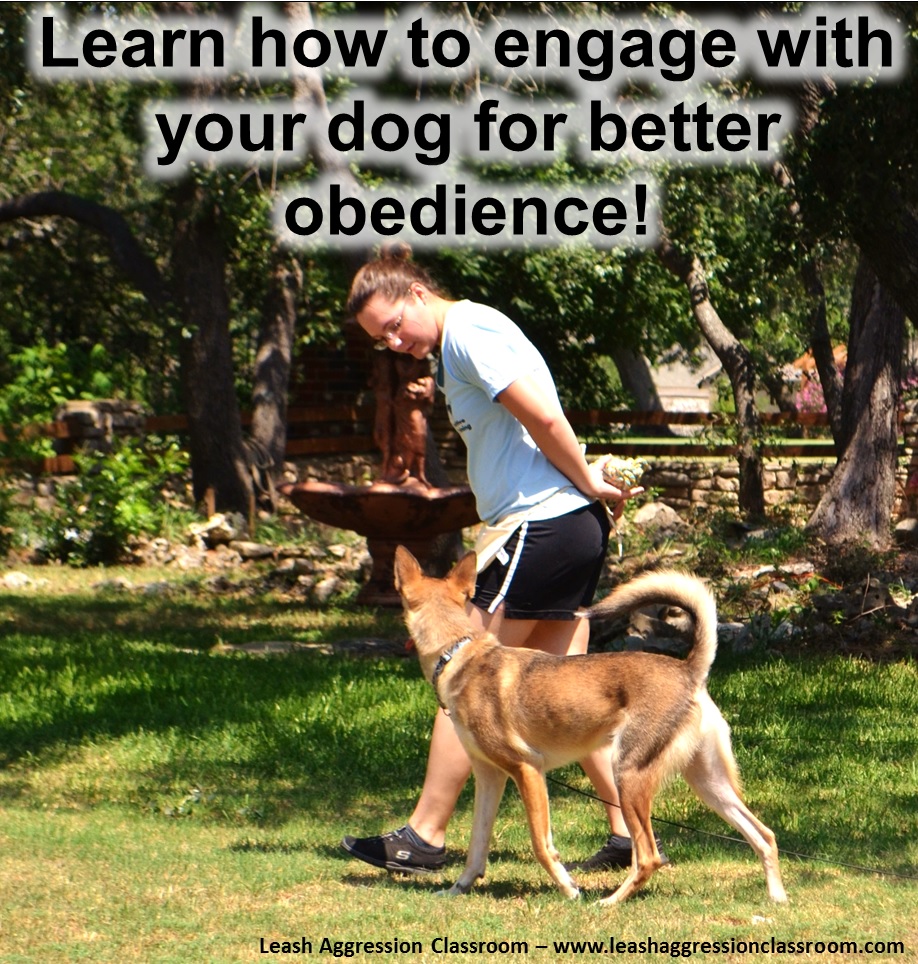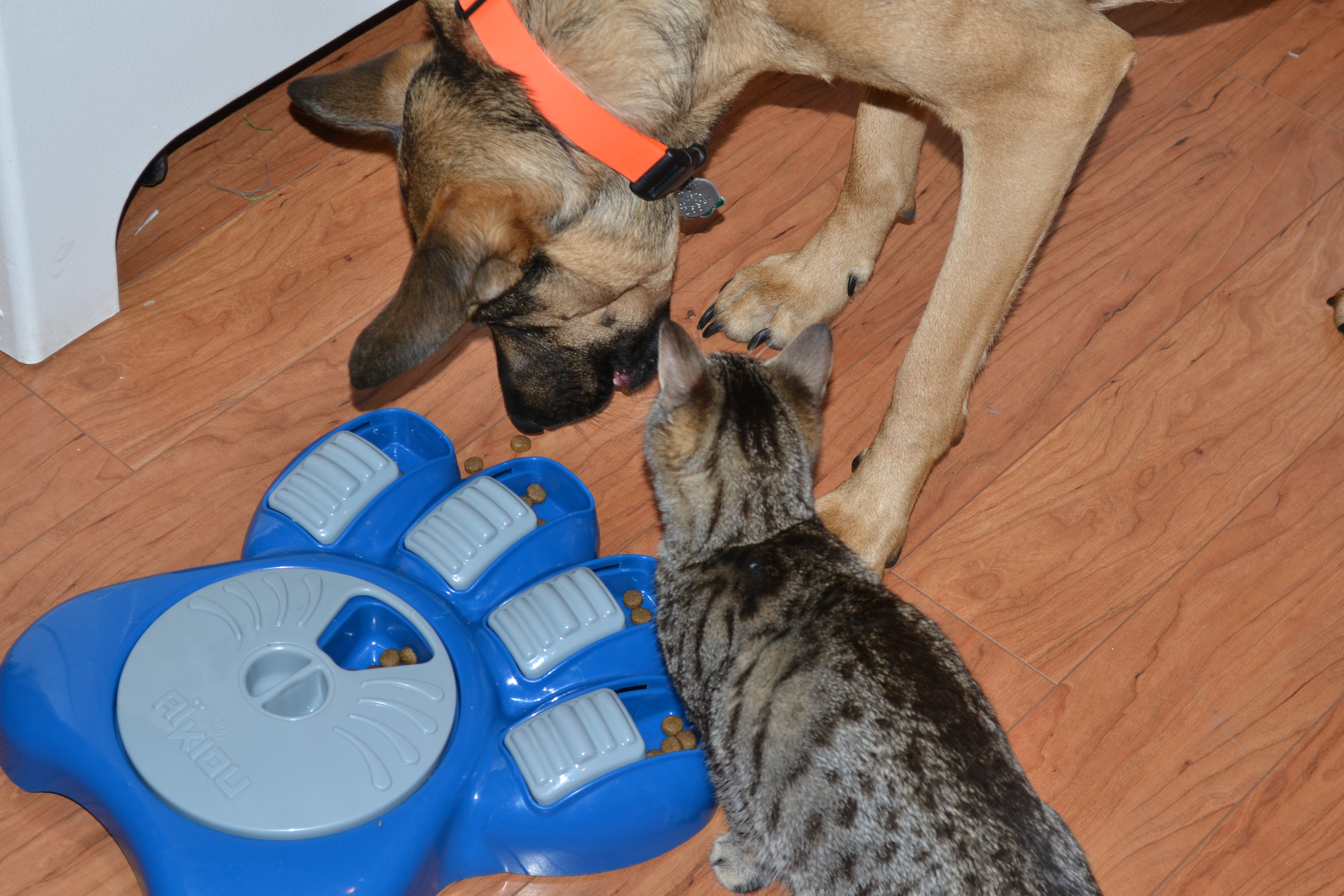Ah the challenges of training a reactive dog… I’ll start by saying, “It’s easier said than done.” As a trainer, I know what to do, how to do it, and when to do it, but that doesn’t mean it’s easy! It’s been hard, but it’s also been fun! That’s what I love about positive reinforcement based training. Not only is your dog understanding more and more what you are looking for, but you are being reinforced because you can see your dog’s desire to please you grow. While leash aggression and reactivity is no laughing matter and can be extremely frustrating, it’s important to remember that you are never alone and that there are hundreds if not thousands of dog owners in your exact position.
My Experiences as the Dog Trainer and Owner of a Reactive Dog
 Let’s go back to my very first sentence in this article. “It’s easier said than done.” Having personal experience handling a fairly reactive dog has given me a unique perspective as a dog trainer and dog owner. Here are some things I’ve learned through training my leash reactive dog:
Let’s go back to my very first sentence in this article. “It’s easier said than done.” Having personal experience handling a fairly reactive dog has given me a unique perspective as a dog trainer and dog owner. Here are some things I’ve learned through training my leash reactive dog:
- I love, love, LOVE the “good” qualities by dog possesses. He is incredibly intelligent and is extremely sensitive and in tune to his environment and to me. He is a clicker training fanatic and is a complete pleasure to teach new tricks to. Our moments training together are extremely rewarding for both of us. (Oddly enough, I have found that many reactive dogs are actually very intelligent. I lovingly call my dog my “socially awkward nerd.”)
- Loker goes from 0-60 in under 2 seconds. He can be sleeping one second and standing ready to work the next. He rarely uses an “in between” setting. When he’s not stressed, he puts 110% into whatever he’s doing – he’s a sprinter not a marathon runner! He’ll play fetch for no more than 5 minutes before he is completely pooped. (We are working on his physical stamina.) This also applies to any training we do together. This makes me stay at the top of my game to make sure I’m keeping up with his energy!
- He has amazing communication skills which isn’t always the case with reactive or aggressive dogs. As a trainer, I notice the little things – a head turn, a sniff to the ground, or a lip lick – all of which are signs of “I mean no harm” that dogs give off which are called calming signals. He communication skills with other dogs is always a pleasure to observe and I hope he passes some of those skills off to our 9 month old puppy.
 He has taught me patience and how to think on my feet. In the big picture, mistakes are simply learning experiences in disguise. Yep! The dog trainer does mess up every once in a while! That’s what happens when you train in the real world and not in a sterile, completely controlled environment. That’s life! As long as you learn from it and don’t get too frazzled, it’s not a big deal. Simply breathe for a minute and try again. It’s
He has taught me patience and how to think on my feet. In the big picture, mistakes are simply learning experiences in disguise. Yep! The dog trainer does mess up every once in a while! That’s what happens when you train in the real world and not in a sterile, completely controlled environment. That’s life! As long as you learn from it and don’t get too frazzled, it’s not a big deal. Simply breathe for a minute and try again. It’s nearlyimpossible to avoid mistakes when training a reactive dog, you’ll turn the corner and their trigger could be right there, or you could be stuck at a stop light as their trigger walks right by your car. You just do your best to redirect or distract and stick to your training plan.- I could talk for quite a while about this dog, he’s taught me much more than most humans I come across, but I’ll end this list on a good note: My dog is a clown. He truly has a sense of humor and for that I am thankful. Check out the following pictures which clearly demonstrate his sense of humor:
If you have a reactive dog, take a minute to tell me what you appreciate in your dog despite his/her reactivity in the comments below.
Dog Trainers: I’ve got a Trainer Partnership Program in place so you can use the Leash Aggression Classroom with your clients! Find out how you can use it to help clients tackle their dog’s leash aggression issues by simply contacting me at ines@thecrossovertrainer.com so that I can send you a pdf with details.









